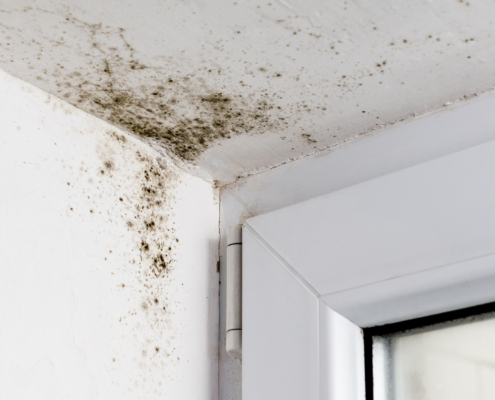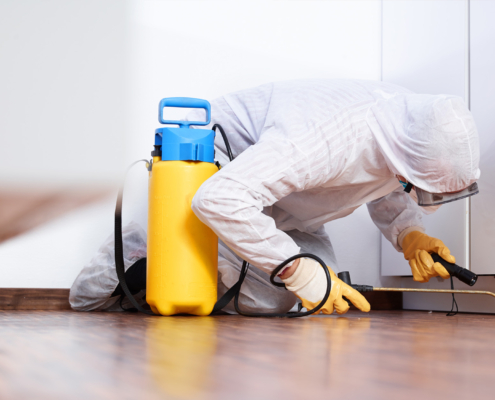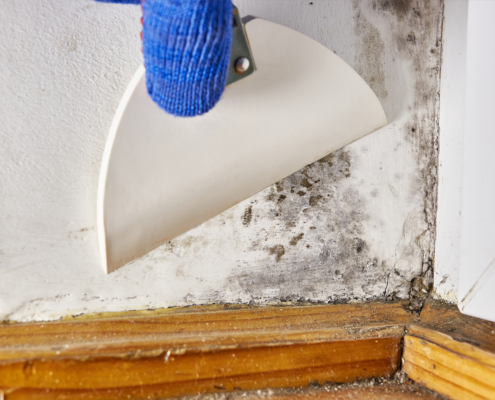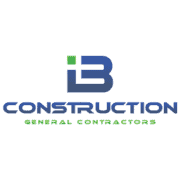 https://aeretusa.com/wp-content/uploads/2024/05/The-Dangers-of-Black-Mold.jpg
1250
2000
Abstrakt MKTG
https://aeretusa.com/wp-content/uploads/2024/05/Aeret_Logo_tagline_Centered_RGB-300x80.jpg
Abstrakt MKTG2024-05-30 08:12:592024-07-26 08:16:57The Dangers of Black Mold
https://aeretusa.com/wp-content/uploads/2024/05/The-Dangers-of-Black-Mold.jpg
1250
2000
Abstrakt MKTG
https://aeretusa.com/wp-content/uploads/2024/05/Aeret_Logo_tagline_Centered_RGB-300x80.jpg
Abstrakt MKTG2024-05-30 08:12:592024-07-26 08:16:57The Dangers of Black MoldMold Remediation Services: What to Do After Discovering Mold Growth at Home or the Office
Stumbling upon mold in your home or office can set off alarm bells. It’s not just about the unpleasant sight; mold can genuinely harm your health and damage the structure of your building. Knowing the right steps to take is key to dealing with this issue.
We’re here to guide you through understanding why mold shows up, the risks it poses, and what actions you should take immediately.
Why Does Mold Happen?
Mold is more than just an ugly spot on your wall; it’s a health risk that can quickly take over if the conditions are right. It pops up due to excess moisture—think leaks, condensation, or just general dampness in the air. Places that stay wet, like your bathroom or kitchen, are prime spots for mold because they offer the perfect breeding ground.
Mold loves organic materials, which are unfortunately common in building supplies such as wood, drywall, and even the glue in wallpaper. When you add in issues like roof leaks or plumbing leaks, it’s easy for moisture to sneak into places it shouldn’t and mold to start growing. Preventing mold starts with managing moisture and making sure your space is well-ventilated.
Regular checks for water damage, fixing leaks swiftly, and keeping the humidity low inside can all help prevent mold. But, even with precautionary measures, mold can still find a way to emerge, showing it’s time for quick action and maybe a call to the professionals for a thorough cleanup.
Potential Health and Structural Risks of Mold
Mold threatens the structure of buildings and poses serious health risks to people living or working within them. Contacting mold spores might cause allergic reactions, trigger asthma episodes, and cause other respiratory issues for some individuals. Mold can also physically harm buildings by breaking down organic materials such as wood, leading to deterioration over time.
Certain molds, like the infamous black mold, are particularly dangerous because they produce mycotoxins, leading to severe health problems, especially with long-term exposure. This makes it critical to tackle mold issues quickly to protect people’s health and the integrity of buildings.
Finding and Handling Mold in Your Space
Spotting mold in your place, whether at home or work, is your cue to take action. Recognizing mold is only the first step. You have to follow up with swift measures to stop the spread. It’s important to know what signs of mold to look for and what actions to take to manage a mold issue effectively.
Spotting Mold: What to Look Out For
When hunting for mold, look for discolored patches on your walls, ceilings, or floors. These patches can appear in black, green, white, or yellow. A musty smell is often a dead giveaway of mold growth. Since mold loves damp, hidden areas, look for spots that tend to collect moisture.
Not all signs of mold are immediately visible. Watch out for paint peeling off your walls, wallpaper starting to come away, or condensation on windows. These are all signs that mold could be thriving in that environment. A professional inspection can help confirm if you have mold and how extensive the problem is.
Isolating the Affected Area: A Crucial Step
Part of the process involves isolating the area with mold, which is vital for preventing the spread of mold spores to other parts of the building during cleanup. This typically involves using plastic sheeting and tape to seal off the area securely. The process also involves shutting down air vents and turning off heating and cooling systems to block spore distribution, a necessary move to keep everyone safe and make mold remediation as effective as possible.
If this isolation isn’t done properly, it could jeopardize the entire cleanup effort by allowing mold spores to spread, underscoring the value of professional involvement and precise methods in this phase.
Take control of your mold situation now with Aeret Restoration, your expert solution for eliminating hazardous mold growthin Florida’s homes and offices. Don’t let mold compromise your health and property.
Why It’s Essential to Get a Professional Mold Inspection Before Cleanup
Starting with professional mold testing is vital when tackling a mold problem. Professionals in mold inspection can pinpoint the type and spread of the infestation and the source of moisture fueling the mold, offering critical input for preventing future problems. These test results are key to planning an effective mold cleanup, ensuring that the right safety measures are in place and that the chosen mold removal methods suit your specific situation.
Relying on experts guarantees that the assessment is accurate and keeps everyone in the building safe. Without this professional evaluation, there’s a risk of missing hidden mold during the cleanup, which means the problem might continue unnoticed. Professional testing lays the groundwork for a thorough, lasting solution to your mold issue.
Next Steps: Call in Mold Remediation Service Experts
Once the mold issue is identified, contained, and professionally assessed, the next move is to bring in mold remediation service specialists. These professionals are equipped with the right tools, techniques, and expertise to remove the mold safely and address the affected area to prevent future outbreaks. This often includes tackling any associated water damage, a common culprit behind mold problems.
Choosing a reputable mold removal service is crucial. You’ll want an experienced, properly licensed team that adheres to strict safety and quality standards. Effective mold remediation service is more than just addressing the current issue; it also involves strategizing to keep your space mold-free in the future, protecting both the residents’ health and the building’s structural integrity.
Comprehensive Mold Remediation Services by Aeret Restoration
Aeret Restoration offers effective mold remediation services for both commercial and residential buildings in Florida, ensuring the elimination of hazardous mold growth and the restoration of safe, healthy air quality. Our full-service approach includes a thorough inspection and assessment, detailed mold testing, and a proven remediation process tailored to address and prevent mold recurrences, prioritizing your schedule and budget.












